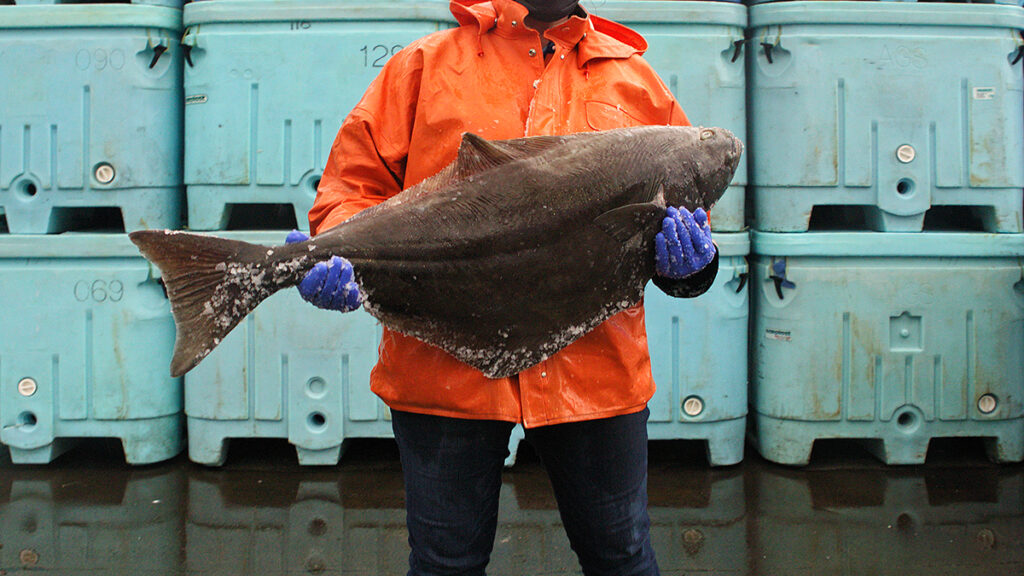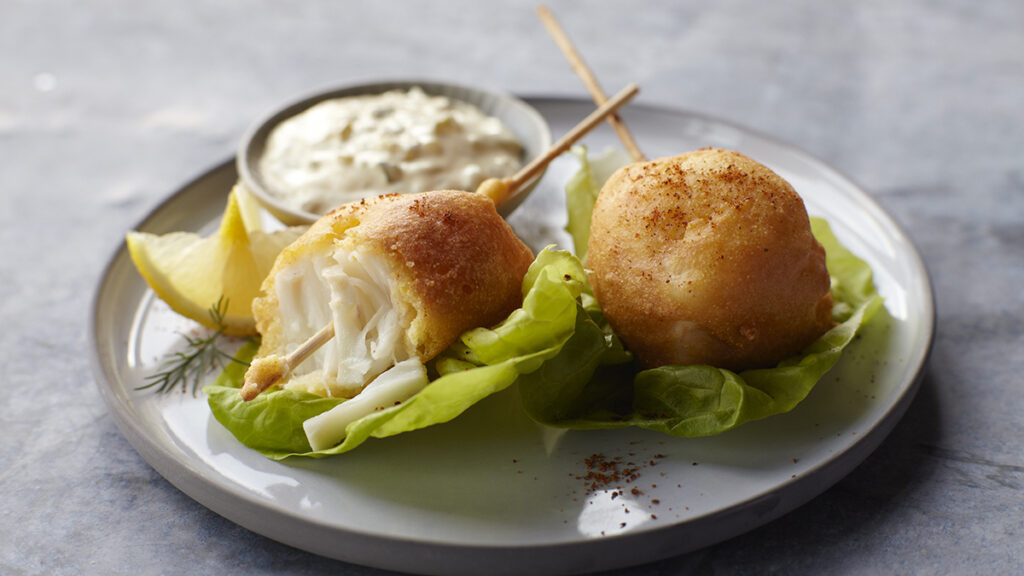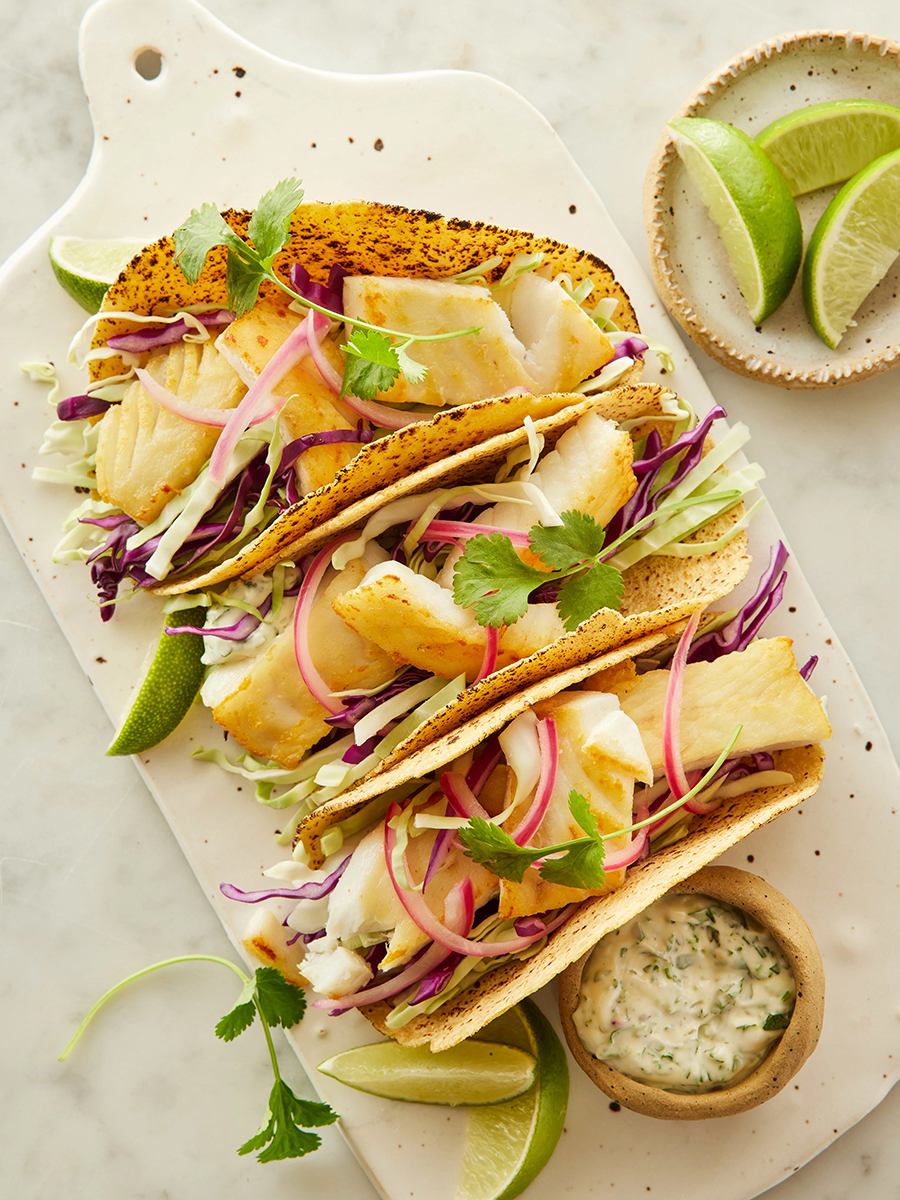Picture this: delicate and juicy halibut fillets, grilled to tender perfection and topped with fresh diced parsley and a generous drizzle of lemon juice. Or how about flaky, tender, baked halibut, encrusted in golden breadcrumbs and topped with a mixture of melted butter and minced garlic? How about brown butter sage halibut, halibut tacos, broiled halibut with lime tarragon aioli, or a rustic Italian halibut piccata under a magnificent sauce of lemon juice, capers, white wine, and butter?
There are so many fantastic ways to enjoy the large, flat, saltwater fish known as halibut. But how much do you really know about this mild-flavored, nutrient-packed, tasty, and versatile fish?
Let’s plunge into the world of halibut and learn more about this fascinating — and delectable — fish that makes every seafood-inspired meal better and answer all your halibut questions.
What type of fish is halibut?
Halibut is more than just a type of white fish. A cousin to the flounder, halibut is a large, flat, diamond-shaped fish, typically about 8 feet in length. These relatively common sand and gravel dwellers hang close to the ocean floor, similar to sole and turbot.

What does halibut taste like?
Halibut has a mild, delicate, and clean flavor. The meat has just a hint of salty brine but is also subtly sweet and buttery. This marvelous flavor profile lets halibut shine when paired with bold sauces and spices like curries, salsas, and blackened seasoning blends. But it’s also just as tasty and impactful with soft and delicate flavors like lemon, dill, and white wine.
What should I look for when buying halibut?
For the best quality halibut, always bring in all your senses when shopping. Look for fillets or steaks that smell mild and salty — like the sea — and avoid packages with a distinct strong or fishy odor. The flesh of the fish should be firm and “springy” to the touch, not mushy or slimy. You don’t have to open the package — you can generally tell through the film. Visually, opt for fish with a translucent, glossy appearance. The flesh should be moist and shiny, without any signs of drying or discoloration. If the halibut in your hands has any dark spots, blemishes, or bruising, pick a different package. You know what, you’re better off just ordering some.
Are there different types of halibut?
The two main varieties of the fish that you will find in grocery stores are Pacific halibut and Atlantic halibut. Each comes from a different body of water (obviously) on somewhat opposite sides of the planet. There are other differences, however, between these two types of fish besides the waters they call home.
Pacific halibut is often considered milder and sweeter, whereas Atlantic halibut is a bit stronger and fishier in flavor. Pacific halibut is also firmer and meatier, and lower in calories and fat than Atlantic halibut. However, it can also be a bit more seasonal: Pacific halibut is most widely available in the spring and early summer, whereas Atlantic halibut tends to have more of a year-round availability.

Where do halibut live?
Geographically, Atlantic halibut are usually found in northern waters surrounding Canada, Greenland, Iceland, and Northern Europe. Pacific halibut can be found all along the northern U.S. coastline, starting with California and reaching up to Canada and Alaska, and across the Bering Sea to the edge of Russia.
How do you make halibut in an air fryer?
First, preheat the air fryer to 375 degrees Fahrenheit. Drizzle your fillets with olive oil or melted butter, lightly season with salt and pepper, and add your choice of spices (dill, thyme, rosemary, garlic powder, cayenne pepper, and paprika are all great options). Next, place your prepared fillets in the basket of an air fryer, making sure your halibut is in a single layer and not overcrowded. Then, cook the fillets for 10 to 12 minutes or until the fish is golden brown and flakes easily with a fork. (Depending on the air fryer, you may need to flip the fish halfway through cooking.) Let the fish rest briefly after cooking, and serve with fresh lemon wedges.
Can you use halibut to make fish and chips?
Of course! With its firm texture and mild flavor, halibut is an ideal option for this British pub staple. Just season your halibut fillets with fresh herbs, a breadcrumb crust, or even a beer batter. Then, fry or bake the fish until golden brown and crispy. Pair with fries, vinegar or tartar sauce, and a hearty coleslaw.
How about fish tacos?

Absolutely! As easy as it is to use halibut for fish and chips, incorporating the protein into fish tacos is even more of a breeze. First, cook your fish — either on the grill, batter in a skillet or in your air fryer, or with blackening spices in the oven. When it’s done, flake the meat into large chunks. Then, simply stuff that meat into warm flour or corn tortillas. Top the halibut with shredded cabbage or lettuce, diced tomatoes, sliced avocado, and a drizzle of lime crema or your favorite taco sauce. Or, for a spicier taco, use pico de gallo, sliced jalapeños, and a drizzle of chipotle mayo or hot sauce. No matter how you wrap it, either option is fantastic.
How does halibut stack up against other fish in terms of nutritional benefits?
Eating halibut is like the equivalent of taking a multivitamin. A 6- to 8-ounce fillet is stuffed with 42 grams of protein — which is comparable to most other fish and seafood you can buy. Halibut is also a great source of the antioxidant selenium, which reduces inflammation in the body and aids in cell repair. It’s also rich in heart-healthy niacin, bone-building magnesium, and vitamins B6 and B12, which help keep our muscles and nervous system energized and operating at their peak.
Does halibut have omega-3s?
It sure does! Although tuna and salmon — and sardines and anchovies — pack more of the inflammation- and disease-busting nutrient ounce per ounce, halibut is still considered by experts to be a good source of omegas. One 6- to 8-ounce halibut fillet provides around 400 milligrams of omega-3 fatty acids.
What’s the largest halibut ever caught?
The largest halibut of any type ever caught was a massive 615-pounder reeled in off the coast of Cape Ann, Massachusetts. That’s as large as some giant sea bass and bluefin tuna!







